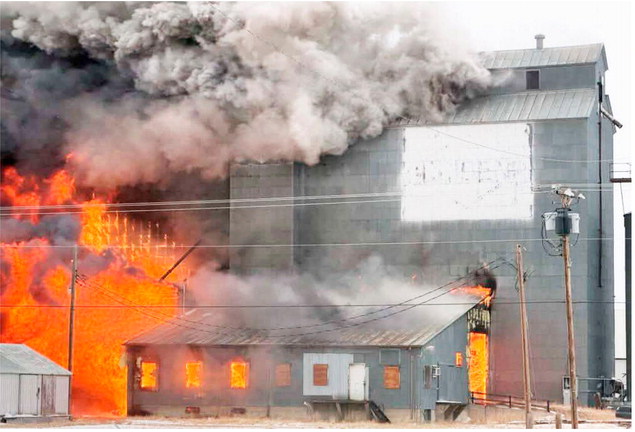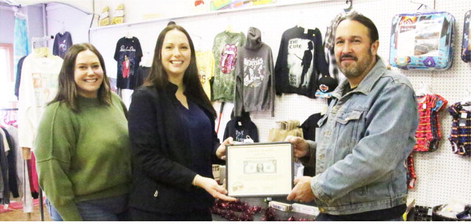maintenance, conservation efforts, weed control, ….
maintenance, conservation efforts, weed control, fire protection, and road/parking-area maintenance. Payment is not for access.” (Emphasis theirs.) But as the value of access increases, there has been a shift in the understanding of what the state’s payments should do. In the debate over HB 637, Rep. Denley Loge, R-St. Regis, argued in favor of increasing the cap to keep pace with private competition for access.
“That cap, I think, is needed to keep those lands open. One of the problems we could get into is private hunting clubs. If some of those ranches [leave Block Management], they’ll get offered more money. And so this $25,000 will help keep that land open to public hunting,” he said while discussing the bill on the House floor.
The Private Lands/Public Wildlife Council is a 13-member group appointed by the governor to represent hunters, landowners and outfitters in state hunter access programs, including Block Management.
Chairman Ed Beall told Montana Free Press, “We have long been concerned with the difference between what a leased or outfitted land can bring versus the $25,000 cap on Block Management. … We have worked to increase that cap and the current rate was approved in the 2021 Legislature. … [T]he council believes that the Block Management program remains the important access program of the day and that it needs to be maintained and enhanced for the future.”
LandTrust offers access to almost 400,000 acres of private Montana land for a variety of activities, including hunting and fishing. Credit: Screenshot from LandTrust. com As the acreage under Block Management has decreased, the number of participating landowners has stayed level. In 2011, there were 1,287 landowners in the program, and in 2020 there were 1,293. So even as the scale of the program has diminished, the complexity of working with program partners has not, and the increased payments have made each acre more expensive. In 2011, the state paid out $5 million for 8.1 million enrolled acres, about $.67 per acre. In 2020, the state paid $6.2 million for 7.16 million acres, a cost of $.86 per acre.
Revenue to pay for the program comes from a menagerie of sources, with the lion’s share coming from non-resident hunting licenses and a grant from the federal Pittman-Robertson (P-R) fund. The Pittman-Robertson Act, passed in 1937, created a nationwide 11% tax on sales of guns, ammunition and archery equipment, and disburses the money to states for use toward wildlife management and restoration. In the program’s 2019 season, the latest data available, P-R contributed a record $4.5 million of Montana Block Management’s $6.1 million in landowner payments.
“Now, because of the increase in P-R and the sales of firearms, ammunition and archery equipment, agencies and fish and wildlife service right now have got all-time record collections on P-R. So, I think we’ve got more money than most agencies as a whole know what to do with,” Kool said.
While Block Management pays landowners $13 per hunter day, packages on LandTrust charge between $100-$200 for a day lease. Non-consumptive activities like hiking and birding are typically priced at $25 to $50 per day. Packages that include lodging cost more. The most spendy package currently available in Montana is a 5-day, 5-person archery hunt at the Little Belt Cattle Company, which runs $12,500.
“Block Management is a great program that opens up a lot of access around the state for hunting,” De Castro said, “and one that I’ve enjoyed using as a sportsman in the past. At the same time, Block [Management] is a government program that, at its core, trades a landowner for control of their land [and] who gets to access it in exchange for compensation. What I’ve learned from thousands of conversations with farmers & ranchers across the country is that the #1 priority for them is ALWAYS control.”
The O’Connors removed their properties from Block Management in 2019.
“Block Management has been a good thing for hunters, but I think it’s getting overrun so much right now with people that a lot of people are looking to things more like what we are doing with LandTrust. They want a little more private hunt than being there with a bunch of people.” O’Connor said.
Master Hunter Program
Bill Spahr, leader of One Montana’s Master Hunter Program, has a different approach.
“The way forward is trying to restore cooperation between hunters and private landowners — helping build relationships,” he said. Block Management is a good program, he said, but he thinks the ability to sign in to a property without interacting with the owner has led to hunters taking access for granted, and not having a personal stake in maintaining good relationships.
The Master Hunter Program ran its first class in 2018. It has 237 graduates so far, and is hoping to add 85-90 to the ranks this year. The program is rigorous. It wants graduates to be exemplary representatives of the hunting community in Montana.
“[T]he biggest challenge and the biggest problem that was cited most by landowners is hunter behavior as the reason a lot of lands are being closed to access,” said One Montana Executive Director Sarah Davies Tilt. “At the same time, the state manages all of our big game through hunting. But, in order to do that, we have to have access to private lands. So we started looking at these challenges and trying to say, well, how do we really get at this challenge?”
That’s why the program requires about 12 hours of online work, 48 hours of inclass instruction (including a shooting field day) and 24 hours for the final field instruction — 84 hours in total.
Once they complete the program, master hunter graduates are required to contribute service hours each year to renew their certification. That could include mentoring hunters, leading hunter safety classes, or attending agency or community meetings related to hunting.
“[In] 2021, more than 50 Master Hunters provided 482 hours of combined volunteer service for 13 projects. But this number is much higher if you include programs not hosted by [the Master Hunter Program] directly. Our hunters reported 2,734.25 hours of community service and continuing education in 2021,” Tilt told MTFP.
As a result of these relationships, the Master Hunters program partners with 27 landowners across the state, representing 250,000300,000 acres of private land, in addition to access to adjacent public sections.
If landowners move to a pay-to-play model, Spahr expresses support for private property rights and diversified income streams, but he also has a word of caution.
“I think that they need to be very careful of the privatization of wildlife,” he said.
‘Tip Of The Iceberg’
Bayard Black moved back from Minnesota in 2015 to operate his family ranch outside of Gallatin Gateway with his father and brother. They already had a history of providing access for charity hunts. When he found LandTrust, he saw the potential. He currently offers a suite of hunting, fishing, camping, shed hunting, mountain biking, and cross-country skiing packages on the family’s two properties. He said he appreciates that LandTrust allows users to rate each other to build the credibility of both the host and guest.
Black acknowledges the complexity involved in price-setting. On one hand, he cares about the animals and wants to see them around the ranch, so he considers the cost of hunting as a management tool to throttle back the pressure on wildlife, even as he understands that demand might make access cost-prohibitive to some.
“There are some folks … who are not going to be able to get into that niche, unless they are making beaucoup bucks. So, it’s kind of bittersweet, but at the same time, I have to make money, too,” he said.
LandTrust isn’t a big part of O’Connor Ranch operations at present, but Ty O’Connor said he could see that changing.
“As time goes on, this part of it will be a part of your operation going forward, where it could help raise a family just by the tourism portion and the hunting portion of your operation. Right now we are just on the tip of the iceberg.”

